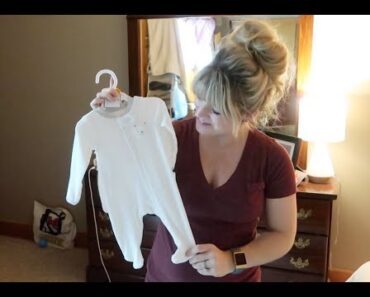Symphysis pubis dysfunction (SPD) involves discomfort at the front or back of the pelvic joints. Pelvic girdle pain is another name for this condition.
The two pelvic bones meet at the symphysis pubis joint, which is at the front of the pelvis. Dense ligaments stabilize the joint. In people with SPD, the ligaments become stretchy or relaxed, which leads to instability of the pelvic joint, causing discomfort.
SPD can lead to significant pain and affect a person’s quality of life. However, both medical treatments and home remedies may provide symptom relief.
Continue reading to learn more about the symptoms, causes, and diagnosis of SPD, as well as some possible treatment options.
The symptoms of SPD can be mild or severe. The most common symptom is pain in the pelvic area. The pain, which people often describe as shooting or aching, can spread to other areas of the lower body, such as the upper thighs, lower back, and perineum.
Some people with SPD may experience additional symptoms that include:
- a clicking sound in the pelvis
- difficulty walking
- trouble urinating or incontinence, in some cases
- pain that worsens with weight bearing activities, such as climbing the stairs
SPD has several possible causes, the most common of which is pregnancy.
During pregnancy, the body’s center of gravity changes, which may affect posture and lead to pain. Additionally, the body releases the hormone relaxin to soften the ligaments, which allows the pelvis to open up and accommodate childbirth. This effect can also lead to SPD.
Doctors do not understand exactly why some women develop SPD in pregnancy, while others do not. However, certain factors may increase the risk, including:
- having overweight or obesity before pregnancy
- having an injury to the pelvis
- having a history of lower back pain
- experiencing pelvic pain in a previous pregnancy
According to research that featured in The Journal of the Canadian Chiropractic Association, 31.7% of pregnant women have experienced SPD.
Although it is much more common in pregnancy and after childbirth, SPD can also occur as a result of arthritis or pelvic injuries.
A doctor will diagnose SPD after reviewing the person’s symptoms and carrying out both a physical exam and a medical history check.
They may sometimes also use ultrasound to rule out other conditions.
It is not generally advisable for women to have X-rays during pregnancy. However, imaging tests, such as X-rays or CT scans, may help the doctor confirm a diagnosis of SPD in individuals who are not pregnant.
Pelvic pain and instability may also affect other parts of the body. For example, pelvic pain can change how a person walks and moves, which could, in turn, place stress on different parts of the body, such as the hips or back.
Research indicates that pelvic girdle pain is severe in about 20% of cases. Severe pain can interfere with mobility and normal daily activities. Walking may feel painful and unstable.
Emotional issues may also develop as a result of SPD-related pain. In one study, women reported feeling irritable, guilty, upset, and frustrated due to SPD. When pain affects mobility, it can also lead to social isolation, and there is a risk of pain medication abuse.
Both medical treatment and home remedies may help treat SPD. The severity of the pain will determine the treatment options. During pregnancy, not all treatment is appropriate. For instance, medication may not be advisable.
Treatment may include the following:
Soft tissue therapy
Soft tissue therapy usually includes chiropractic care, which may involve spinal manipulation and massages to improve pelvic joint stability and positioning.
Wearing a pregnancy support belt
A pregnancy belt supports the pelvic bones and helps maintain correct alignment. The belt may provide short-term pain relief.
A study involving 46 pregnant women with pelvic girdle pain found that the use of a pregnancy support belt reduced pain successfully, but only when the women used it regularly for short periods.
Stretching
As SPD affects everyone differently, stretches that work for one person may not be effective for another person.
It is best to check with a doctor which stretches are safe, especially during pregnancy.
One example of a stretch that may provide pain relief is the pelvic tilt. People can perform this exercise by following these steps:
- Lie down on the back with the knees bent and the feet flat on the floor.
- Pull the stomach muscles in and tighten the gluteal muscles to flatten the back and tilt the pelvis.
- Hold the position for 5–10 seconds and then relax.
If this movement relieves discomfort, a person can do 10–20 repetitions.
Remedies
These home remedies may also reduce SPD-related discomfort:
- placing a pillow between the legs when sleeping
- avoiding sitting for too long
- applying an ice pack to the pelvic area
- staying active but avoiding any activities that cause pain
- incorporating rest breaks every day
- wearing supportive shoes
- keeping the knees together when getting in and out of the car
- performing Kegel exercises to strengthen the pelvic floor muscles
Learn how to perform Kegel exercises here.
Pain medication
Over-the-counter and prescription pain relievers may also help alleviate the symptoms of SPD. However, not all pain relievers are safe to use during pregnancy. A healthcare professional can offer advice on suitable options.
There is no definitive way to prevent SPD, but women can reduce their risk of developing the condition during pregnancy by achieving and maintaining a moderate body mass index (BMI).
Symphysis pubis dysfunction involves pain at the back or front of the pelvic joints. It can lead to difficulty walking and significant discomfort.
The most common cause of SPD is pregnancy.
Treatment helps decrease pain and improve mobility. Possible treatment includes soft tissue manipulation and stretches.

































